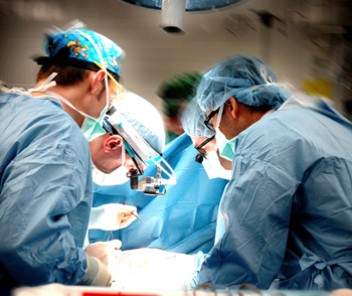Not only can nanotechnology be used in specific drugs or medicine, but it can also be used to perform surgeries. In many cases, surgery must be done on a minute part of the body but to ensure that all danger (such as a tumor) is removed, extensive surgery (and thus skin damage) must be done. Also, sometimes the area upon which the surgery must be done is very delicate and requires extensive care when being operated upon. With nanotechnology, however, minute surgical instruments and robots can be made which can be used to perform microsurgeries on any part of the body. Instead of damaging a large amount of the body, these instruments would be able precise and accurate, targeting only the area where surgery should be done. Visualization of surgery can also be improved using nanotechnology. Instead of a surgeon holding the instrument, computers can be used to control the nano-sized surgical instruments. “Nanocameras” inserted into the surgery-site can provide close up visualization of the area of surgery. Thus, there is also a very less chance of any mistakes or faults being made in the surgery. With advances in technology and computers, perhaps the nano-sized instruments themselves can be designed and programmed to carry out surgery on certain and specific parts, without the surgeon even having to interfere in the actual surgery. Surgery could also be done on tissue, genetic and cellular levels. Imagine a nano-surgery being done to remove defective or cancer causing cells or a defective gene (that may cause a mental disorder such as schizophrenia or other disorders such as diabetes) before the gene even activates itself! The video on the right is an excellent example of how this procedure might actually work. An example of current nano-surgery progression is a new type of flesh welder at Rice University. The flesh welder is used to fuse two separate pieces of chicken meat into a single piece. The two pieces of chicken are placed together, touching each-other. A greenish liquid containing gold-coated nanoshells is steadily dribbled along the seam. An infrared laser is traced along the seam, causing the two piece’s sides to weld together (Citation 5). |
 Surgery will be revolutionized by advances in nanotechnology in medicine. (Image Citation 10). |
|
This technology could be implemented to solve the difficulties and blood leaks caused when the surgeon tries to restitch the arteries he/she has cut during a kidney or heart transplant. The flesh welder could weld an artery perfectly. The nanoshells themselves could be designed to dissolve into the blood after the welding has been hardened/is permanent. These nanoshells would then just come out as biological waste products. There would be no need for the tedious task of applying or removing stitches after an operation. |
||